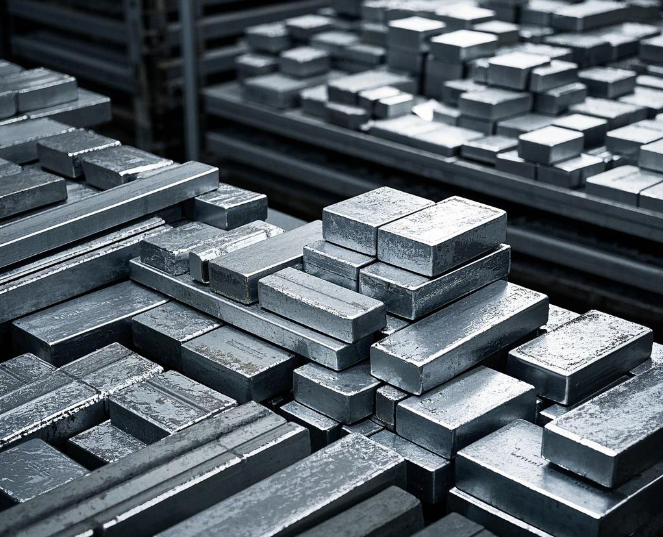Aluminum is one of the most widely used metals in various industries, from construction to electronics. However, the price of aluminum can fluctuate significantly due to a variety of factors. Understanding these factors can help businesses plan and manage costs more effectively.
The price of aluminum is influenced by market demand, production costs, and external factors like global politics and environmental regulations.
Let’s explore the key factors that affect the price of aluminum and why it can change over time.
What Determines the Price of Aluminum?
The price of aluminum is primarily driven by supply and demand dynamics, along with various market conditions. These include raw material costs, energy prices, transportation, and global economic factors.
Aluminum prices fluctuate due to both domestic and international factors, including global demand, geopolitical issues, and energy costs.
Key Determinants of Aluminum Pricing
-
Raw Material Costs (Bauxite)
Bauxite is the primary ore used to produce aluminum. The cost of bauxite extraction and transportation to refineries plays a significant role in aluminum pricing. If bauxite supply is limited or more expensive to extract, the price of aluminum rises. -
Energy Costs
Aluminum production is highly energy-intensive, particularly during the smelting process. The price of electricity or fuel used to power smelting plants is a major contributor to aluminum pricing. Changes in global energy markets, such as fluctuations in oil or natural gas prices, directly impact aluminum costs. -
Global Supply and Demand
Demand for aluminum is driven by industries like construction, automotive, aerospace, and packaging. When demand is high, especially in emerging markets, the price of aluminum tends to rise. Conversely, reduced demand can lead to price declines. -
Economic and Political Factors
Geopolitical events, trade tariffs, and government policies can have a significant effect on aluminum prices. For instance, tariffs on aluminum imports or production restrictions in key markets like China can lead to price spikes.
| Factor | Description |
|---|---|
| Raw Material Costs | Price of bauxite influences aluminum cost |
| Energy Costs | Energy for smelting directly affects pricing |
| Supply and Demand | High demand and low supply raise prices |
| Economic and Political Factors | Trade tariffs, regulations, and policies influence costs |
What Is the Price of Aluminum Alloy?
Aluminum alloys are mixtures of aluminum and other metals, designed to enhance certain properties such as strength, corrosion resistance, or conductivity. The price of aluminum alloy can differ from pure aluminum based on its composition and manufacturing process.
The price of aluminum alloys is often higher than that of pure aluminum due to the addition of other materials and more complex production methods.
Price Variation Among Different Aluminum Alloys
-
Type of Alloy
The type of alloy dictates its cost. Alloys with a higher percentage of premium metals like copper or magnesium tend to be more expensive than those made with more common metals. For example, 6061 aluminum alloy (commonly used in the aerospace industry) is more expensive than standard 1050 or 1100 alloys. -
Manufacturing Process
The cost of producing aluminum alloys also varies based on how the alloy is processed. Methods like extrusion, casting, or forging require different levels of labor and energy, impacting the price of the final product. -
Alloying Elements
The addition of certain elements like silicon, copper, or zinc increases the price. For example, alloys designed for high-strength or aerospace applications can be much more expensive due to the inclusion of more costly elements.
| Alloy Type | Price Range (per ton) |
|---|---|
| Pure Aluminum (1050, 1100) | Lower price |
| 6061 Aluminum Alloy | Moderate price |
| High-Strength Alloys | Higher price due to special alloys |
Why Is Aluminum So Expensive?
Aluminum's price is affected by both natural factors and the inherent cost of its production process. Despite being abundant in the Earth's crust, the process of refining and producing aluminum is energy-intensive and costly.
The high cost of aluminum production, coupled with global demand and environmental factors, is why aluminum can sometimes be very expensive.
Key Reasons Behind Aluminum’s High Price
-
Energy-Intensive Production
The Hall-Héroult process, used to produce aluminum from bauxite, consumes a significant amount of electricity. In regions where energy costs are high, the price of aluminum tends to be higher as well. -
Environmental Regulations
Stringent environmental regulations, particularly in countries like the U.S. and the EU, require the aluminum production process to meet certain emission standards. Compliance with these regulations adds to the overall cost. -
Supply Chain Disruptions
Aluminum production is subject to disruptions in the global supply chain, such as natural disasters, geopolitical tensions, or labor strikes. These disruptions can drive up prices due to reduced supply. -
Demand from Emerging Markets
Rapid industrialization in countries like China, India, and Brazil has led to a rise in demand for aluminum. When demand outpaces supply, prices increase.
| Factor | Impact on Price |
|---|---|
| Energy-Intensive Production | High energy consumption raises costs |
| Environmental Regulations | Compliance costs lead to higher prices |
| Supply Chain Disruptions | Reduced supply increases prices |
| Demand from Emerging Markets | Increased demand pushes prices up |
What Affects Aluminum?
The price of aluminum can be influenced by a range of factors, both macroeconomic and industry-specific. From global economic conditions to local regulations, several variables come into play.
Understanding the many factors that affect aluminum prices helps businesses make informed decisions about buying, selling, and investing in the metal.
Factors That Impact Aluminum Pricing
-
Global Economic Trends
A global recession or economic slowdown can decrease demand for aluminum, leading to lower prices. Conversely, an economic boom increases industrial activity, raising demand and prices. -
Geopolitical Tensions
Trade wars, sanctions, or tariffs on aluminum exports can limit supply, causing prices to rise. Political decisions, especially in major aluminum-producing countries like China or Russia, can also affect global pricing. -
Technological Advances
Advances in aluminum production technologies that reduce energy consumption or improve efficiency can lower production costs and, in turn, the price of aluminum. -
Competition from Substitutes
The development of alternative materials that offer similar properties at a lower cost can also affect the price of aluminum. For example, the rise of carbon fiber in the automotive industry could reduce demand for aluminum.
| Factor | Impact on Price |
|---|---|
| Global Economic Trends | Economic growth increases demand, raising prices |
| Geopolitical Tensions | Political instability can restrict supply, increasing prices |
| Technological Advances | Innovation may lower production costs, reducing prices |
| Competition from Substitutes | New materials can reduce aluminum demand and lower prices |
Why Are Aluminum Prices Falling?
Aluminum prices can drop due to a variety of reasons, ranging from reduced demand to changes in global supply dynamics. Understanding the root causes of falling prices helps businesses plan for economic shifts.
Aluminum prices can fall when supply exceeds demand, or when external factors like technological improvements and economic conditions favor lower costs.
Reasons for Falling Aluminum Prices
-
Oversupply
If production exceeds demand, aluminum prices tend to fall. In particular, if a country or region produces too much aluminum, it can flood the global market and drive prices down. -
Economic Slowdown
A global economic downturn or recessions in major markets can reduce demand for aluminum, leading to price drops. -
Lower Energy Costs
When energy prices drop, the cost of aluminum production decreases, which can lead to lower aluminum prices as producers pass on savings to consumers. -
Increased Recycling Rates
Recycling aluminum uses significantly less energy than producing it from raw materials. As the recycling rate rises, the cost of producing aluminum decreases, leading to lower prices in the market.
| Reason | Impact on Price |
|---|---|
| Oversupply | Excess production leads to price decreases |
| Economic Slowdown | Lower demand reduces prices |
| Lower Energy Costs | Reduced production costs lead to lower prices |
| Increased Recycling Rates | More recycled aluminum reduces demand for new production |
The price of aluminum is influenced by a complex interplay of raw material costs, energy prices, supply and demand dynamics, geopolitical events, and technological advancements. While prices can rise due to factors like demand spikes or supply disruptions, they can also fall when energy costs decrease, recycling rates increase, or oversupply occurs. Understanding these factors allows businesses to navigate aluminum pricing more effectively.





